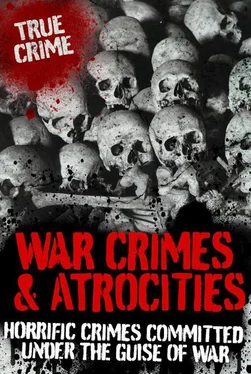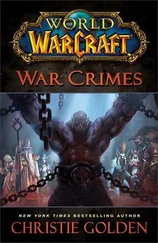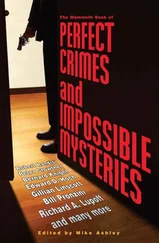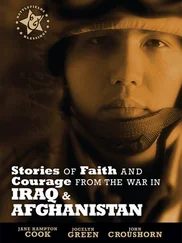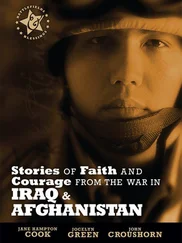A SCENE OF CARNAGE
There was little opportunity for the inmates of these camps to mount any opposition to their brutally violent masters, but towards the end of the war, news came that the Nazis were about to be defeated. In 1945, Communist leader Josip Tito, who later became a national hero and ruled Yugoslavia for many years, advanced on the camps with his partisan troops, and as the soldiers approached, the inmates rose up in rebellion against the Ustasa guards. However, in the fighting, many prisoners died. The rest met their deaths when the Ustasa guards, knowing the game was up, murdered as many prisoners as they could before surrendering. In May 1945, Tito’s troops invaded the camps and found a horrific scene of carnage and devastation there that was far beyond anyone’s worst nightmare.
In German-occupied Serbia, the nightmare continued, with a military government that set up concentration camps in 1941. Virtually the entire Jewish population of these areas were imprisoned in the five camps at Nisch, Schabatz, Sajmiste and Topovske Supe. They were dealt with in the most horrific way. In the summer of 1941, the majority of Jewish men in the camps were shot. The following year, at Sajmiste, the Nazis brought a specially designed ‘gas truck’ to the camp and proceeded to dispense with almost all the Jewish women and children there. The women and children were herded into a hermetically sealed gas compartment in the truck and gassed to death. In all, 8,000 women and children were put to death in this way, over a period of less than a year.
In the areas of Yugoslavia occupied by Hungary and Bulgaria, who had joined the Nazis, more horrifying events took place. As well as deporting Jews and Serbs from these territories, the Hungarian army police units took to murdering them in the streets. In January 1942, in the city of Novi Sad, thousands of Jews and Serbs were killed in this way. After the German occupation of Hungary in March 1944, Jews from the Hungarian-occupied territory of Yugoslavia were also deported to the death camps, along with thousands of others across Europe. In the Bulgarian-occupied areas of the country, non-Bulgarian Jews were handed over to the Germans for extermination at the Treblinka death camp in Poland: in total, about 11,000.
By the end of the war, around 60,000 Yugoslav Jews, out of a population of 78,000, were dead. Those who survived managed to do so by hiding with friends and relatives for the duration of the war, or by joining the partisan forces.
REPRISAL ATROCITIES
As well as the systematic genocide of innocent victims, including thousands of Serbs, in the concentration camps, the war years in Yugoslavia were characterized by appalling atrocities that took place in the cities, towns, villages and countryside. This was partly as a result of the activity of the National Liberation Army, the force commanded by Communist leader Tito, which was the largest resistance force in Europe. The Germans vowed that each time the liberation army killed a soldier, they would kill 100 civilians in reprisal; for a wounded soldier, the price would be 50 civilians. As a result, civilian losses in Yugoslavia were high, estimated at more than one million. However, on the more positive side, the NVA’s campaign of guerrilla warfare resulted in the eventual defeat of the Axis powers, with the help of the Red Army and Allied forces.
In response to guerrilla warfare against his troops, Hungarian General Ferenc Feketahalmy-Czeyder launched a vicious reprisal campaign at the town of Novi Sad. There, his Arrow Cross militia rounded up a group of over 800 Jews and Serbs and forced them, at gunpoint, to walk over the frozen Danube river. The ice was too thin to hold them, and most of them drowned. Those who did not drown in this way were shot at point blank range. In the six days that followed, there was more carnage as the troops rampaged around the town, killing over 3,000 more victims.
THE SERBIAN MASSACRES
One of the worst aspects of the war in Yugoslavia was the wholesale massacre of a large percentage of the Serbian population by the Croatian fascist army, the Ustasa, who were given carte blanche by the Germans to pursue this objective without interference. As a result of this policy, thousands of Serb men, women and children all across the country were murdered at random, often being brutalized and tortured in the most sadistic way before they were killed. Stories abound of children’s heads being cut off and thrown at their mothers, of women’s breasts being severed, and childrens’ bodies mutilated. The true facts of the mass genocide of Serbs during the German occupation of Yugoslavia were suppressed for many years after World War II, and in many cases, accurate records of what took place did not exist (or were destroyed). However, today there remains little doubt that the treatment of the Serbs by the Croatian fascist militia was at least as vicious as that of the Jews by the German Nazis, if not more so. For this reason, among many others, animosity between the Serbs and the Croats continued to run high for decades after the war, resulting a renewed period of conflict in 1980, after the death of President Tito, who had managed to hold these warring factions together during his premiership.
1941–45

The Netherlands has a long history of tolerance within its society, and for this reason, many Jewish people over the centuries made the country their home. Amsterdam, in particular, became one of the largest Jewish population centres in Europe, a place where many Jews from around the world were able to settle: to do business, conduct their religious observances, and to build their communities, in an atmosphere of tolerance and respect on the part of the Dutch authorities and population.
During World War I, The Netherlands managed to stay out of the conflict, despite being at the heart of the European mainland. The Dutch aimed to take the same stance during World War II; however, when Germany invaded the Netherlands, they were forced to fight. After a brief conflict, during which Rotterdam was heavily bombed, the Dutch surrendered. The Netherlands was occupied by the Germans, and from then on, the Dutch became complicit in the Nazi war plan.
GENOCIDE PROGRAMME
This was a disaster for the many Jewish people who lived in the country, and over the period of occupation, more than 100,000 Dutch Jews were killed. There were also many Dutch Roma people (or gypsies) who were murdered as part of the Nazis’ programme of genocide. As had happened in France, the Germans were able to draw on a deep strain of anti-Semitism running through Dutch society, and many ordinary Dutch citizens collaborated with the Nazis, sending thousands of innocent Jews and others to their deaths in the concentration camps. Towards the end of the war, the Dutch as a whole also suffered considerable hardship as the Allied forces invaded Europe, disrupting transport and food supplies. Indeed, when the Netherlands was finally liberated on 5 May, 1945, the entire population had undergone a harsh winter, with many dying of starvation and malnutrition.
THE DUTCH HOLOCAUST
During the occupation, the notorious SS ruled the country, under the aegis of Reich Commissar Arthur Seyss-Inquart. Seyss-Inquart was a favourite of Hitler’s and was fanatical in his Nazi beliefs. He personally oversaw each and every aspect of the administration of the Netherlands. He banned all political parties except the Dutch National Socialist party and ensured that all activities took place under the watchful eye of his paramilitary police force. He also imprisoned many former officials, creating a reign of terror in which the most innocent of activities, such as playing chess, were subject to constant surveillance.
Читать дальше
